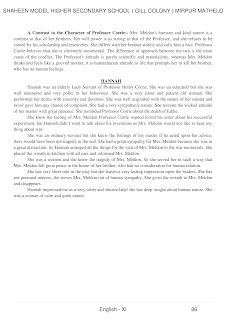WHO IS RESPONSIBLE FOR STOPPING CLIMATE CHANGE?
After placing plantiffs in a position of climate danger, defendants have continued to act with deliberate indifference to the known danger they helped create and enhance. A destabilized climate system poses unusually serious risks of harm to plaintiff’s lives and their bodily integrity and dignity.
Juliana vs United States Government, Lawsuit filed by Children Against the US Government
States
States have the obligation to mitigate the harmful effects of climate change by taking the most ambitious measures possible to prevent or reduce greenhouse emissions within the shortest possible time-frame. While all countries must take all reasonable steps to reduce emissions to the full extent of their abilities, wealthy states must lead the way, by decarbonizing their economies more quickly than developing countries.
States must also take all necessary steps to help everyone within their jurisdiction to adapt to the foreseeable and unavoidable effects of climate change, thus minimizing the impact of climate change on their human rights. This is true irrespective of whether the state is responsible for those effects, because states have an obligation to protect people from harms caused by third parties.
States must take steps to tackle climate change as fast and as humanely as possible. In their efforts to address climate change, they must not resort to measures that directly or indirectly violate human rights. For example, conservation areas or renewable energy projects must not be created on the lands of Indigenous peoples without consulting them and getting their consent.
Wealthy states must provide sufficient financing and support to developing countries to allow them to meet ambitious emission reduction targets and implement effective climate change adaptation measures. States most responsible for the climate crisis must also provide compensation and other forms of remedies for the losses and damages people have already suffered due to the climate crisis.
All states must take steps to tackle climate change as fast and as humanely as possible. In their efforts to address climate change, they must not resort to measures that directly or indirectly violate human rights. For example, conservation areas or renewable energy projects must not be created on the lands of Indigenous peoples without consulting them and getting their consent. The transition to a zero-carbon economy must be just and lead to a more equal society, rather than putting most of the costs and burdens on those least able to carry them.
In all measures, states should respect the right to information and participation for all affected people, as well as their right to access effective remedies for human rights abuses.
However, the current pledges made by governments to mitigate climate change are completely inadequate, as they would lead to a catastrophic 2.7°C increase in average global temperatures over pre-industrial levels by 2100. People, including children, in many countries around the world are using human rights arguments to take their governments to court for their failure to establish sufficient climate change mitigation targets and measures. In several cases, including Belgium, Germanyand the Netherlands, courts have already ruled in their favour.
Corporations
Businesses also have a responsibility to respect human rights. To meet this responsibility, companies must assess the potential effects of their activities on human rights and put in place measures to prevent negative impacts. They must make such findings and any prevention measures public. Companies must also take measures to remedy human rights abuses they cause or to which they contribute, either by themselves or in cooperation with other actors. Such responsibilities extend to human rights harms resulting from climate change.
Corporations, and particularly fossil fuel companies, must also immediately put measures in place to minimize greenhouse emissions – including by shifting their portfolio towards renewable energy produced in a manner compatible with human rights– and make relevant information about their emissions and mitigation efforts public. These efforts must extend to all the major subsidiaries, affiliates and entities in their supply chain.
Fossil fuel companies have been historically among the most responsible for climate change – and this continues today. Research shows that just 100 fossil fuel-producing companies are responsible for 71% of global greenhouse gas emissions since 1988. There is growing evidence that major fossil fuel companies have known for decades about the harmful effects of burning fossil fuels and have attempted to suppress that information and block efforts to tackle climate change.
The global agro-industrial food system and the large scale plantations on which it depends, are often associated with high greenhouse gas emissions, deforestation and land degradation, as well as forced evictions of Indigenous Peoples, attacks on environmental activists and other human rights violations.
Private financial institutions, such as banks, asset managers and insurance companies, also play a key role in driving the climate crisis, especially when they fund fossil fuel companies and businesses linked to deforestation without any climate-related conditions.











